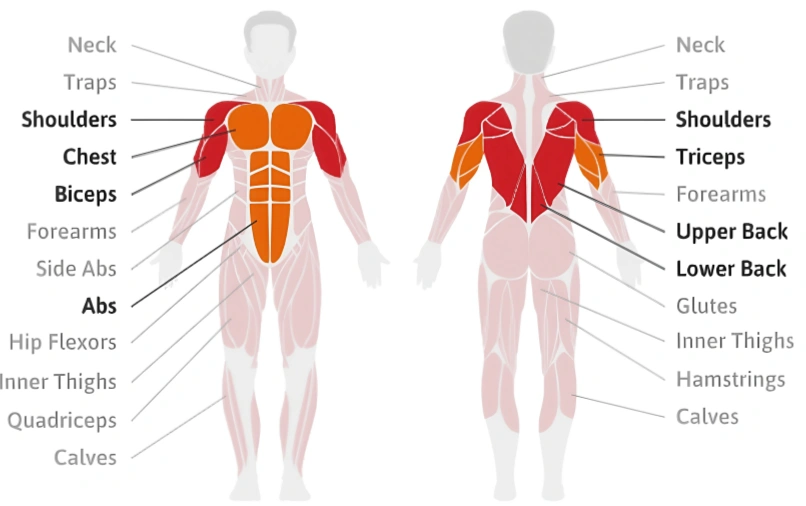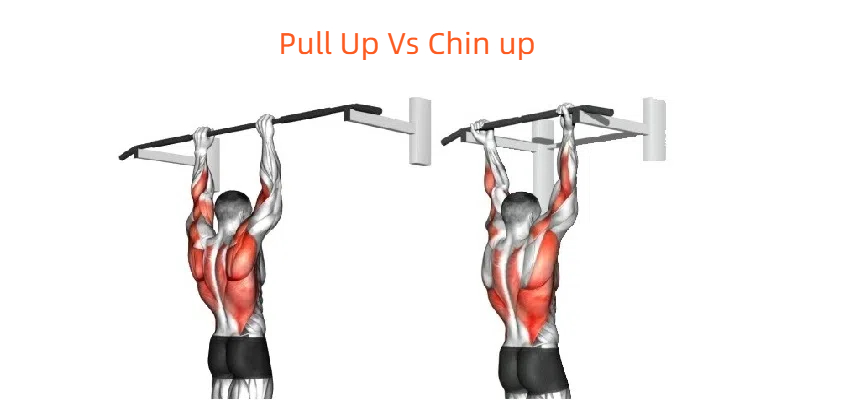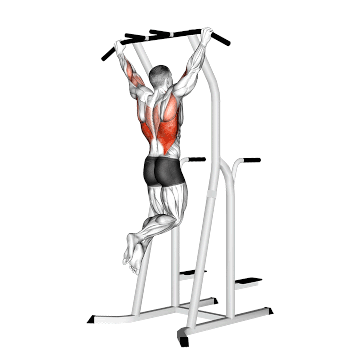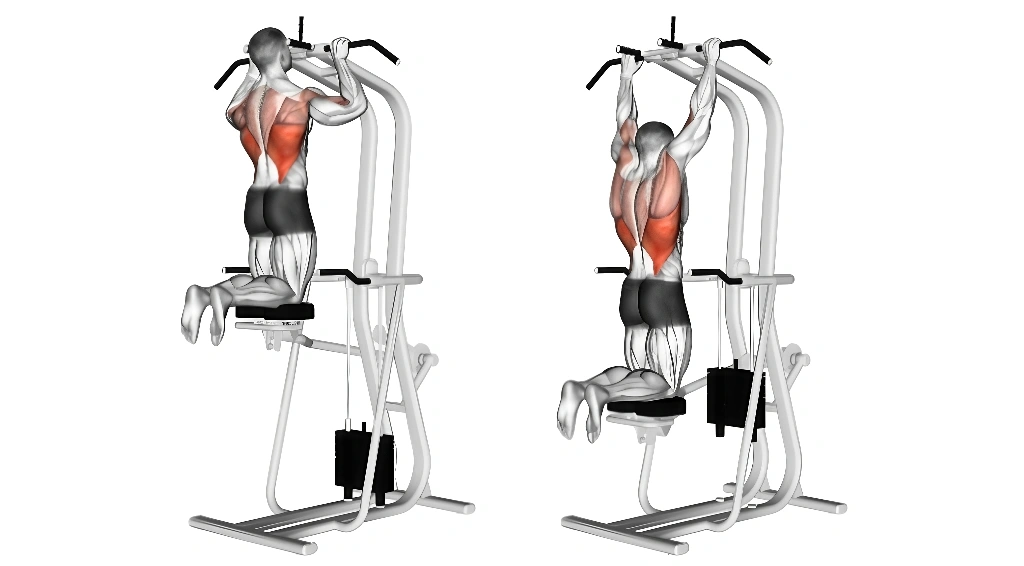Why are pull ups so hard? It’s a fair question—because on the surface, they seem simple. Just grab the bar and pull yourself up, right? But the moment you try, reality hits. You jump, grip the bar… and then just hang there. Not moving. Not even close.
The truth is, pull ups are humbling. You might be doing fine with weights, squats, even push-ups—but this? You pull, nothing happens. Feels kind of ridiculous, right?
Don’t worry—pull-ups mess with almost everyone in the beginning.
In this article, we’ll break down why they’re so tough, what your body’s missing, and how you can actually train to get that first solid rep.
What Is a Pull-Up?
A pull-up means grabbing a bar and pulling your whole body up—chin over the top. Simple in theory, tough in real life. You’re just using your own strength to lift your body vertically—no equipment, no weights. Simple on paper.
But once you try it, reality kicks in. Pull-ups aren’t just about pulling. It’s not just one muscle doing the job—your whole upper body has to work together.
✅What muscles do pull-ups actually use?
Pull-ups hit more than just your arms. To do even one clean rep, your whole upper body has to work together:

- Lats (back) – the main pulling power behind the movement
- Biceps – assist with the elbow bend, but can’t carry you alone
- Shoulders – help control the motion and keep you steady
- Forearms and grip – hold you on the bar (no grip = no pull)
- Core muscles – stabilize your body and prevent swinging
🧠 If any of these areas are weak, your pull-up effort will fall apart fast.
✅ Pull-up vs Chin-up: What’s the difference?

They might look similar, but grip changes everything:
- Pull-up = overhand grip (palms away)
→ Emphasizes your back and shoulders - Chin-up = underhand grip (palms facing you)
→ Shifts more load to your biceps
🧠 Most beginners find chin-ups slightly easier—because biceps are often stronger than the back early on.ba
So……Why Are Pull Ups So Hard?
Pull-ups look easy—until you’re just hanging there, barely moving, wondering if gravity got stronger. Your arms shake, your feet kick… nothing. It sucks. But it’s not random—there’s a reason it feels like this.
Let’s go through them one by one—and actually explain what’s going on.
Your muscles just aren’t strong enough yet
This is the most obvious one, but also the most common. Pull-ups rely mainly on your back muscles, like your lats and traps, plus your arms, shoulders, and core. But guess what? Most of us don’t train those muscles enough—especially the back.
🔵Example
You may be able to do bicep curls or push-ups, but when’s the last time you did rows or lat pulldowns? Without pulling strength in the right places, you literally can’t lift yourself up.
👉Also, if your core is weak, your body won’t stay stable while you’re hanging. You’ll swing, twist, or just hang there like a noodle.
You’re lifting your entire bodyweight
In most exercises, you can adjust the weight. Not here. With pull-ups, your weight is the weight—and you have to lift 100% of it.
🔵Example
Imagine trying to curl a barbell that weighs exactly what you do. That’s what a pull-up is. If you weigh 80kg but have the upper-body strength of someone who lifts 30kg? You’re not going anywhere.
👉So yes, the heavier you are, the harder it gets—not because you’re “too big,” but because your strength-to-weight ratio just isn’t there yet.
You don’t know how to control your body in space
Pull-ups aren’t just a strength test—they’re a coordination test. You need to engage the right muscles in the right order, keep your body still, and pull in a straight path.
👉But most people don’t have that kind of neuromuscular control. Your brain isn’t used to saying “hey back, fire now” or “tighten your abs right now.”
🔵Example
You try to pull, but your legs start swinging, your shoulders shrug up, your arms do most of the work, and you’re not going anywhere. That’s because your brain and muscles aren’t in sync yet.
👉This “mind-muscle connection” takes time to build—but without it, you waste effort.
Your grip gives out before anything else
People underestimate this one all the time. If your hands and forearms aren’t strong enough to hold your weight on the bar, then nothing else matters. Your back could be ready, but if you let go early, game over.
🔵Example
You grab the bar, feel okay for the first second… then your fingers start slipping. You haven’t even pulled yet, and you’re already dropping.
👉Grip strength is its own thing. If you haven’t trained it—say, with dead hangs or farmer’s carries—it’s probably your weakest link.
Your form is all over the place
A lot of people think, “Just yank myself up!” But pull-ups are technical. Bad form kills your power. Loose core? You’ll swing. Flared elbows? Your shoulders take too much strain. No scapula control? You lose efficiency.
🔵Example
You pull fast and hard, but your body curls forward, your legs flail, your chin never clears the bar—and you feel like you’re working super hard but getting nowhere.
👉Clean form matters. It’s not about force—it’s about control and timing.
Your brain holds you back
This might surprise you, but pull-ups are mentally intimidating. Especially in public. You step up to the bar, and immediately think:
🔵“Everyone’s watching.”
“What if I fail?”
“I don’t want to look weak.”
That anxiety makes your muscles tense, your breathing short, and your focus collapse. Even if your body can do it, your brain gets in the way.
👉Confidence matters. And like strength, it needs training too.
✅ Final takeaway:
Pull-ups are hard for many reasons at once. Maybe your grip gives out. Or your back’s not strong enough. Or you’re just scared of looking weak. It’s all valid.
But none of it means you’re stuck forever. You fix it piece by piece—like everyone else.
How To Make Pull-Ups Easier
If you can’t do a pull-up yet, that’s okay. Most people can’t at first. But there’s a way forward—and no, it’s not by “trying harder.” It’s by building the strength in parts.
Here’s exactly how.

1️⃣ Start with slow negatives
This means starting at the top of the movement, then lowering yourself down slowly. That’s it.
Why it works: Your body is stronger when lowering than lifting. This helps build the exact muscles used in a full pull-up.
How to do it: Use a box or jump up so your chin is over the bar. Then lower yourself as slowly as you can—3 to 5 seconds is perfect.
Start with 3 sets of 3 reps.
💡 It’s okay to shake. That’s your muscles learning.
2️⃣ Train with rows
Can’t lift your whole body yet? No problem. Do rows instead.
Why it works: Rows build your back and arm strength, but with less weight.
How to start: Try bodyweight rows under a low bar, or use dumbbells. Focus on pulling with your back, not just your arms.
💬 Think of it as a “horizontal pull-up.”
3️⃣ Just hang there
Literally. Just hang from the bar.
Why it works: Grip is often the first thing to fail. Dead hangs help you build hand, shoulder, and core strength—all key for pull-ups.
How to start: Hang for 10–15 seconds. Rest. Repeat. Build up over time.
4️⃣ Build your core and back separately
Planks, hollow holds, lat pulldowns—all great. These train the parts that make pull-ups work.
Train them 2–3 times a week, even if you’re not on the bar yet.
✅ Pull-ups aren’t magic—they’re built. Start with what you can do, and let that carry you to your first full rep.
So… why are pull ups so hard?
Because they’re honest. They expose weak links you didn’t know you had—grip, core, coordination, mindset. But that’s what makes them worth doing.
Start where you are. Hang, row, lower. Build from the bottom up.
And one day, you’ll pull yourself over that bar and realize: you earned this.
No shortcuts. Just progress.

Hi, I’m Alex Carter, part of the editorial team at Leadman Fitness. We specialize in crafting premium custom racks, cable machines, functional trainers, and strength accessories for home and commercial gyms. With a background in competitive powerlifting and gym design consulting, I’ve spent years testing gear under heavy loads and optimizing layouts for efficiency.
I focus on translating real-world user frustrations—like space limitations, budget constraints, or durability needs—into actionable solutions. By collaborating directly with our engineers and facility owners, I ensure our custom equipment evolves to solve the unspoken challenges lifters face daily. What I share isn’t textbook advice; it’s battle-tested insight from racks I’ve welded, cables I’ve replaced, and gym floors I’ve trained on.
